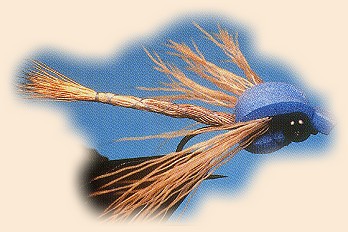1. Tie a thread base that covers the front half of the
shank. Leaving the thread hanging in the center of the
hook.
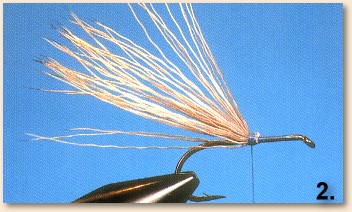
2. Select, clean, and stack a small clump of elk hair. Tie
it on with the tips pointing to the rear of the hook. The
fibers should be twice as long as the complete hook. Trim
any excess hair ends.
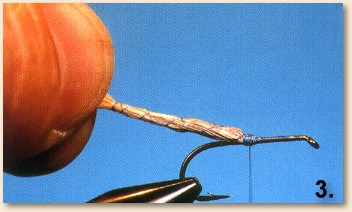
3. Wrap the thread out on the elk hair (forming the
extended body) until you are close to the tips. Then
wrap back to the hook. Use open spirals when completing
this part of the operation. It is easier to hold the hair
fibers with the left hand keeping them under tension while
wrapping the thread with the right hand.
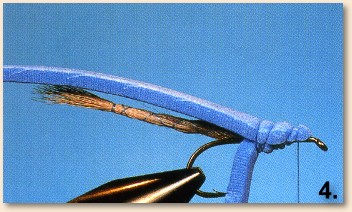
4. Cut two strips of foam that are as wide as the distance of
the hook gape and trim a point on each. Bind them to the front
part of the hook with one on top and the other on the bottom.
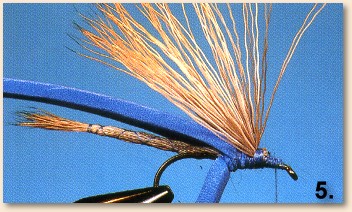
5. Select, clean, and stack a clump of hair about twice
as big as the unit you used for the tail in Step Two.
Bind this clump to the top of the shank and trim the
excess ends.
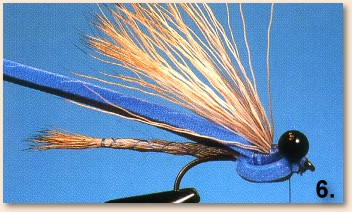
6. Cut two connected beads from a section of plastic bead
chain. Tie them on the hooks slightly back of the hook
eye. Pull the bottom foam forward and bind it to the bottom
of the hook just behind the hook eye. Trim away the excess
bottom section of foam.
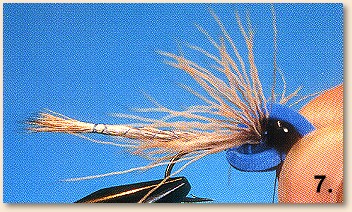
7. Divide the clump of elk hair located on top of the hook into
two segments. Pull the top foam up, over, and through the hair
segments.
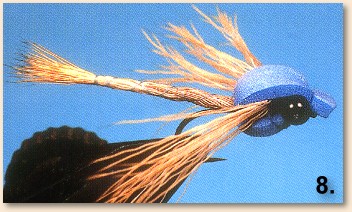
8. Bind the top foam to the hook at the eye and trim the
excess to form the head. Whip finish, trim the thread,
and apply head cement. ~ Al and Gretchen

